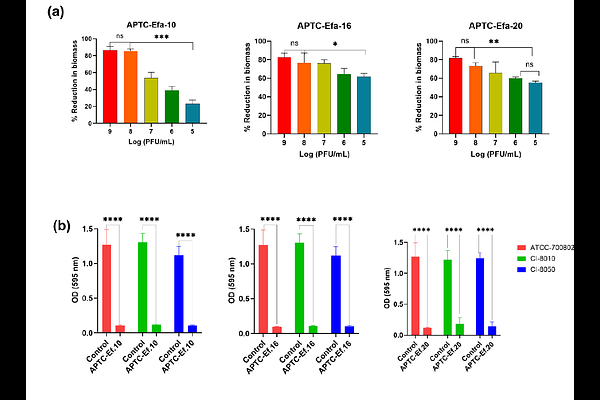LicD-Mediated Cell Wall Decoration Governs Phage Sensitivity in Enterococcus faecalis Clinical Isolates

LicD-Mediated Cell Wall Decoration Governs Phage Sensitivity in Enterococcus faecalis Clinical Isolates
Awad, M.; Bouras, G.; Feizi, S.; Grigson, S. R.; Wormald, P.-J.; Psaltis, A. J.; Vreugde, S.
AbstractEnterococcus faecalis has emerged as a prevalent antibiotic-resistant pathogen in clinical settings. Herein, we report the identification of three novel lytic phages targeting vancomycin-resistant E. faecalis. While the isolated phages all belonged to the Kochikohdavirus genus, there were distinctive differences in their tail fibre proteins, affecting their adsorption. The phages showed strong antibacterial activity with wide host range, infecting >90% of the tested E. faecalis clinical and hospital wastewater isolates (n=13) with variable efficiency. The variation in host range was genomically correlated to the presence of the LicD gene in phage sensitive bacteria, which is responsible for phosphorylcholine decoration of the bacterial cell wall. Furthermore, the isolated phages were predicted to harbour genes encoding for depolymerase enzymes, which was confirmed by in vitro testing showing a >80% reduction in biofilm biomass. Phages inhibited bacterial growth for [≥]12 hours, followed by the emergence of bacteriophage insensitive mutants (BIMs) that were 4-fold more sensitive to vancomycin compared to parent strains. In addition, the isolated BIMs showed less capability of evading THP-1 macrophage and produced weaker biofilms. These findings underpin the potential of the isolated phages in combating recalcitrant E. faecalis associated biofilm-mediated infections.